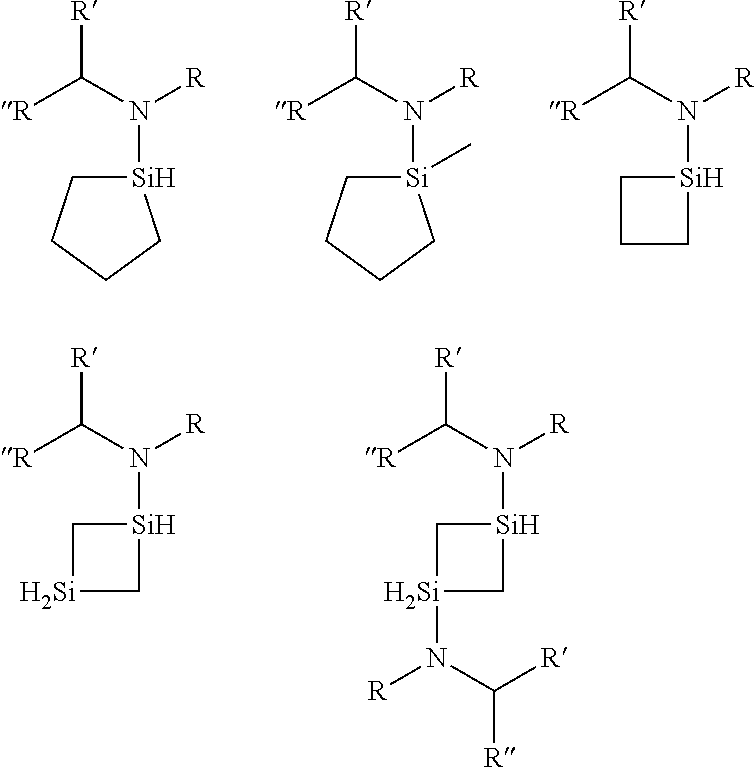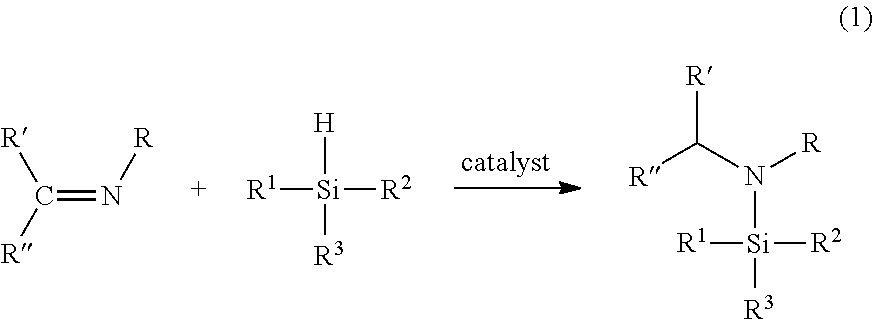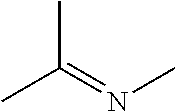Organoaminosilanes and methods for making same
- Summary
- Abstract
- Description
- Claims
- Application Information
AI Technical Summary
Benefits of technology
Problems solved by technology
Method used
Image
Examples
example 1
Synthesis of N,N-di-iso-propylaminosilane (cf. Table 2)
[0056]The catalyst Ru3(CO)12 (0.10 g, 0.16 mmol) was dissolved in the imine N-iso-propylidene-iso-propylamine (7.0 g, 71 mmol) and the resulting solution was exposed to a silica source SiH4 gas at 82 psia for 6 hours at 40° C. The resulting reaction solution was determined by GC-MS to contain N,N-di-iso-propylaminosilane. GC-MS showed the following peaks: 131 (M+), 126 (M−15), 116, 110, 98, 88, 74.
example 2
Synthesis of N,N-di-iso-propylaminodisilane (cf. Table 3)
[0057]The catalyst Ru3(CO)12 (0.10 g, 0.16 mmol) was dissolved in the imine N-iso-propylidene-sec-butylamine (7.0 g, 71 mmol) and the resulting solution was exposed to a disilane Si2H6 gas at 102 psia for 6 hours at 40° C. The reaction solution was determined by GC-MS to contain N,N-di-iso-propylaminodisilane. GC-MS showed the following peaks: 161 (M+), 146 (M−15), 128, 114, 104, 88, 72.
example 3
Synthesis of 1-(N,N-di-iso-propylamino)-1,4-disilabutane (cf. Table 5)
[0058]A mixture of a silica source 1,4-disilabutane (0.48 g, 5.3 mmol) and the imine N-iso-propylidene-iso-propylamine (0.25 g, 2.5 mmol) was added to a stirred suspension of the catalyst, anhydrous NiCl2 (0.02 g, 0.15 mmol) in tetrahyrdofuran (THF) (1 mL), in a nitrogen-filled glovebox. After 2 days of stirring at room temperature, the resulting brown mixture was filtered to remove catalyst sediments and was determined by GC and GC-MS to contain the end product 1-(N,N-di-iso-propylamino)-1,4-disilabutane. GC-MS showed the following peaks: 189 (M+), 188 (M−1), 174 (M−15), 159, 144, 130, 102.
PUM
 Login to View More
Login to View More Abstract
Description
Claims
Application Information
 Login to View More
Login to View More - R&D
- Intellectual Property
- Life Sciences
- Materials
- Tech Scout
- Unparalleled Data Quality
- Higher Quality Content
- 60% Fewer Hallucinations
Browse by: Latest US Patents, China's latest patents, Technical Efficacy Thesaurus, Application Domain, Technology Topic, Popular Technical Reports.
© 2025 PatSnap. All rights reserved.Legal|Privacy policy|Modern Slavery Act Transparency Statement|Sitemap|About US| Contact US: help@patsnap.com



